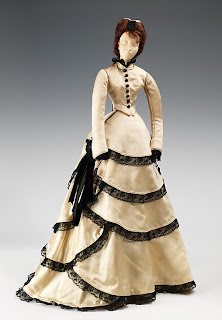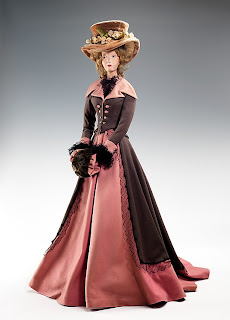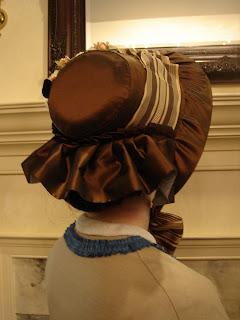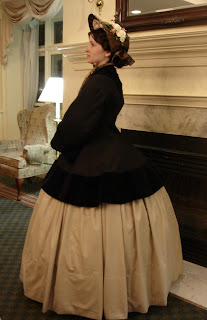1855: Véra Boréa. "The unique style of this dress, representing the year 1855, was taken from one launched by Empress Eugénie during her trips to the Pyrenees Mountains. The skirt is lopped up by tabs from the underskirt. The shoes are particular highlights of this ensemble, featuring incredible care and
minute detail."
1866: Marcelle Chaumont. "The inspiration for this doll came from a painting by Winterhalter. Franz Xaver Winterhalter (1805-1873) was a German painter best-known for his royal portraiture. His most well-known works include portraits of Empress Eugénie and Empress Elisabeth of Austria."
1870: House of Balenciaga. "Balenciaga's doll was inspired by a dress made for Princess Metternich. Princess Metternich was a great patron of the arts, and responsible for introducing Charles Fredrick Worth to the Empress Eugénie, his greatest client."
1878: House of Lanvin. "The house of Lanvin was inspired by the paintings of Sir Lawrence Alma-Tadema when designing her contribution to the Gratitude Train. Alma-Tadema (1836-1912), was a Dutch-born painter who later settled in England was one of the most renowned artists of late 19th-century. He painted classical subjects, most often scenes of the luxurious Roman Empire. Known for his meticulous research, Alma-Tadema's paintings were used in the 20th century as source material for several Hollywood movies including, "Ben Hur", "Cleopatra", "The Ten Commandments", and "Gladiator". Though Lanvin's doll represented the year 1878, the classical draping and brilliant colors of Alma-Tadema's work are evident in the design."




















































